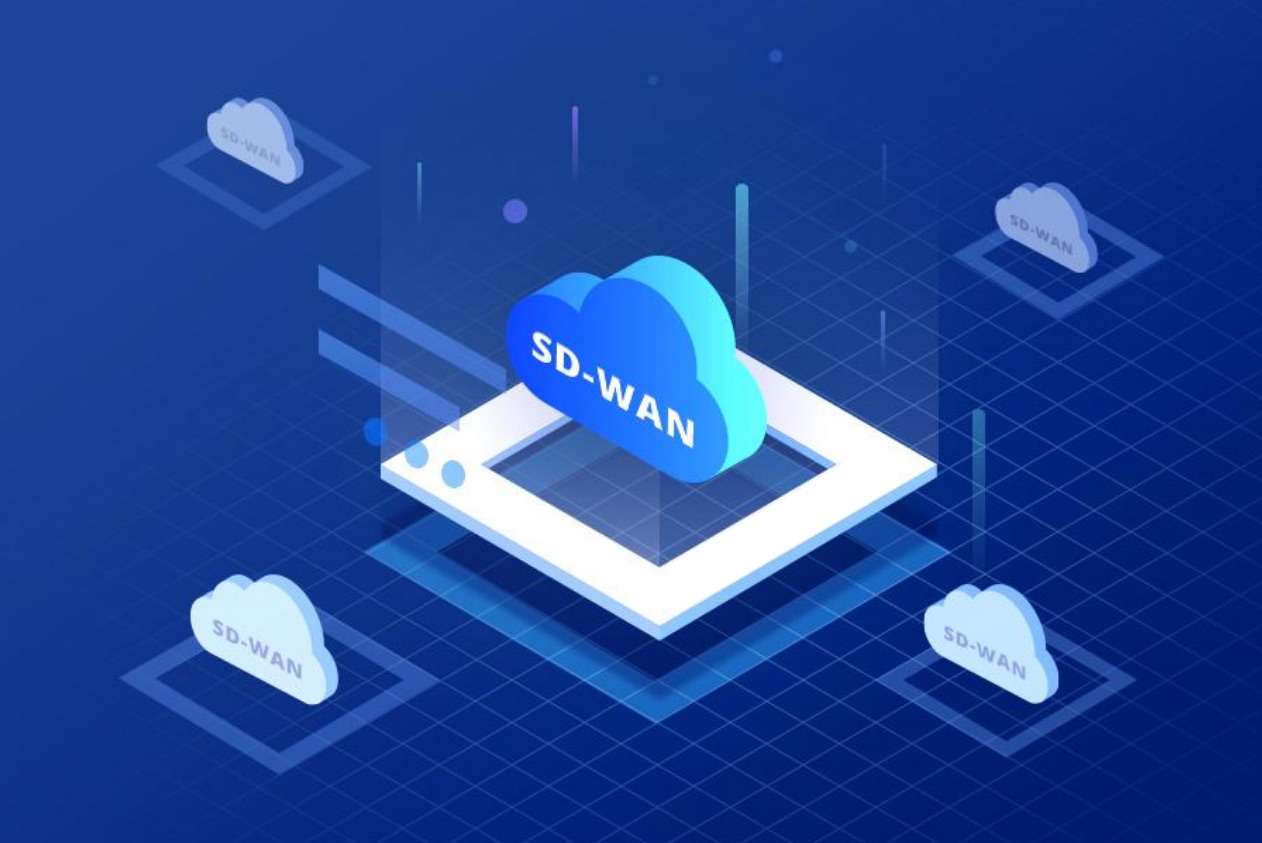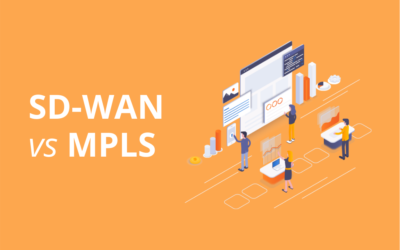SD-WAN is an acronym for software-defined wide area network. It’s one of the latest incarnations of WAN technology. It can connect many branch locations of a business to a central hub or cover multiple locations in a large area such as a school, university campus or retail chain.
The idea of SD-WAN is to simplify the management and operation of a WAN by removing the networking hardware from its control mechanism. One of the main benefits of this is to allow companies to build higher-performance WANs using lower-cost and commercially available internet access.
How Does SD-WAN Work?
SD-WAN works by establishing encrypted tunnels between sites with each site having its own SD-WAN device equipped. Once connected to the local networks, those devices then download custom-defined traffic policies and establish tunnels with one another or a PoP (point of presence).
SD-WAN’s manage the routing and traffic control – outbound traffic is routed down the optimum path based on application policies and real-time conditions. If one last-mile connection fails, then the SD-WAN device can also automatically fail over to an alternative connection using pre-configured policies.
What Are The Benefits Of Implementing SD-WAN
Conventional WANs are good for interconnecting largely static environments, for example, they connect offices with production facilities, retail outlets, cloud services, and data centres.
Conventional WANs use a reliable, dedicated bandwidth such as MPLS to connect sites together, then a variety of add-ons to boost things to a higher standard regarding security and reliability.
Nowadays, we’re all about connecting users in a variety of locations, using a variety of devices, simply, efficiently and securely; the MPLS network can be maintained for critical apps but complemented by SD-WAN to leverage the other options available, such as nbn and 5G.
Flexibility, agility, and versatility are what people and businesses want in this day and age. They also want to provide a better experience for their users whilst simultaneously lowering costs and maintaining security.
How Secure Is SD-WAN?
SD-WAN can increase your network security with encrypted network traffic, network segmentation, increased visibility into the WAN, central provisioning systems and permission based access control.
By segmenting networks, businesses can limit any attack damage to a manageable area.
Central provisioning systems provide software that controls all of the nodes interdependently, which gives better communication and security in your network. This is a very different way of working from the older, traditional WAN setup.
SDN vs. SD-WAN
Of course, there are differences between a typical software-defined network and an SD-WAN.
The primary difference is how they are used. SDNs have been used in traditional telecom and data centres, enabling services on-demand, reducing high operational costs, and improving performance and scalability.
SD-WAN, however, is a cost-effective alternative that provides connectivity for geographically dispersed locations.
Both are based on the same methodology of separating the control plane from the data plane to make networking more intelligent.
The Pros And Cons
Like everything, there are pros and cons that businesses need to consider before making the decision to implement SD-WAN into their network. Let us run quickly through some of them now:
Pro: Cost Reduction
Businesses can reduce costs by diverting some non-critical network traffic from MPLS to more cost-effective broadband alternatives in a hybrid WAN configuration. SD-WAN makes it easier to achieve cost savings by automatically splitting traffic between low-cost, highly-available WAN links based on business needs and objectives while saving MPLS for critical business services.
Pro: Simple setup
It makes deploying WAN services at branches so much faster and simpler. Anyone can plug in an SD-WAN appliance and watch as it is discovered, provisioned, and brought online speedily and simply. This reduces the need for expensive, onsite IT personnel.
Pro: Better Performance
SD-WAN eliminates the backhaul penalties of traditional MPLS networks and leverages the internet to provide secure, high-performance connections from the branch to the cloud. Users will see significant improvements in their experience when using cloud-based and similar applications.
Pro: Improved Traffic Management
SD-WAN improves traffic management for organisations. The unified dashboard gives system administrators metrics on network performance allowing them to route traffic in via the most optimal route.
Pro: Maximum Security
Most SD-WAN hardware includes next-generation firewalls (NGFWs) with malware protection to defend against malicious cyber threats. Stateful inspections of data packets occur as they reach the perimeter of the firewall. This ensures security is maintained across the entire network.
Let’s quickly delve into the cons….
Firstly, depending on your vendor or service provider, on-premise equipment may be costly.
The vendor capability is also variable and often does not meet the original version of software-based networking.
Also, SD-WANs have not yet been fully adopted. A large number of businesses still rely on old connections in order to keep internal and external operations ongoing. This is compensated by adopting the hybrid solution.
Another point to make is that the majority of SD-WAN services are provisioned over the public internet with no end-to-end Quality of Service for traffic flow unlike MPLS.
How Do I Get Started?
At Data Express, we can seamlessly migrate your business to an SD-WAN environment that is less complex, more agile, and easier to manage.
Try SD-WAN free for 30-days. Contact us on 1300 801 110 or click the button below to get started.




